Navigation: A day on the water with the team
May 01, 2024
Our boat’s first runs a few months ago marked a new chapter of SP80’s adventure. The team now spends most of its time in Leucate, in the south of France, to be on the water as often as the conditions allow it! The goal is to seize the maximum from these learning opportunities to be ready for the world record. Our boat is a unique craft that requires complex logistics before, during and after each run: How does a day of navigations unfold? How long does it take to set up a run? How many runs can we fit in a day?
This article delves into the details of a day with the team on the water.
The day before : final preparations
Before we set off, we need the right conditions: our team is constantly on the lookout for the right weather window and monitors forecasts frequently. The final decision is made only a few hours before D Day: if the Tramontane winds are forecasted to be steady and from 20 to 40 knots, the sailing day is a go and alarm clocks are set bright and early!
To spend as much time as possible on the water and avoid losing time on a sailing day, the boat is prepared beforehand. Visit hatches are closed, safety equipments (helmets, harnesses, air tanks) are placed in the cockpit, cameras are cleaned and systems are checked and fastened to avoid that they move in the hulls. The kite team, on its end, prepares the kites that will be used (between 20m2 and 50m2) as well as multiple sets of lines (between 40 and 70 meters long) so that a kite can be launched multiple times in one session.
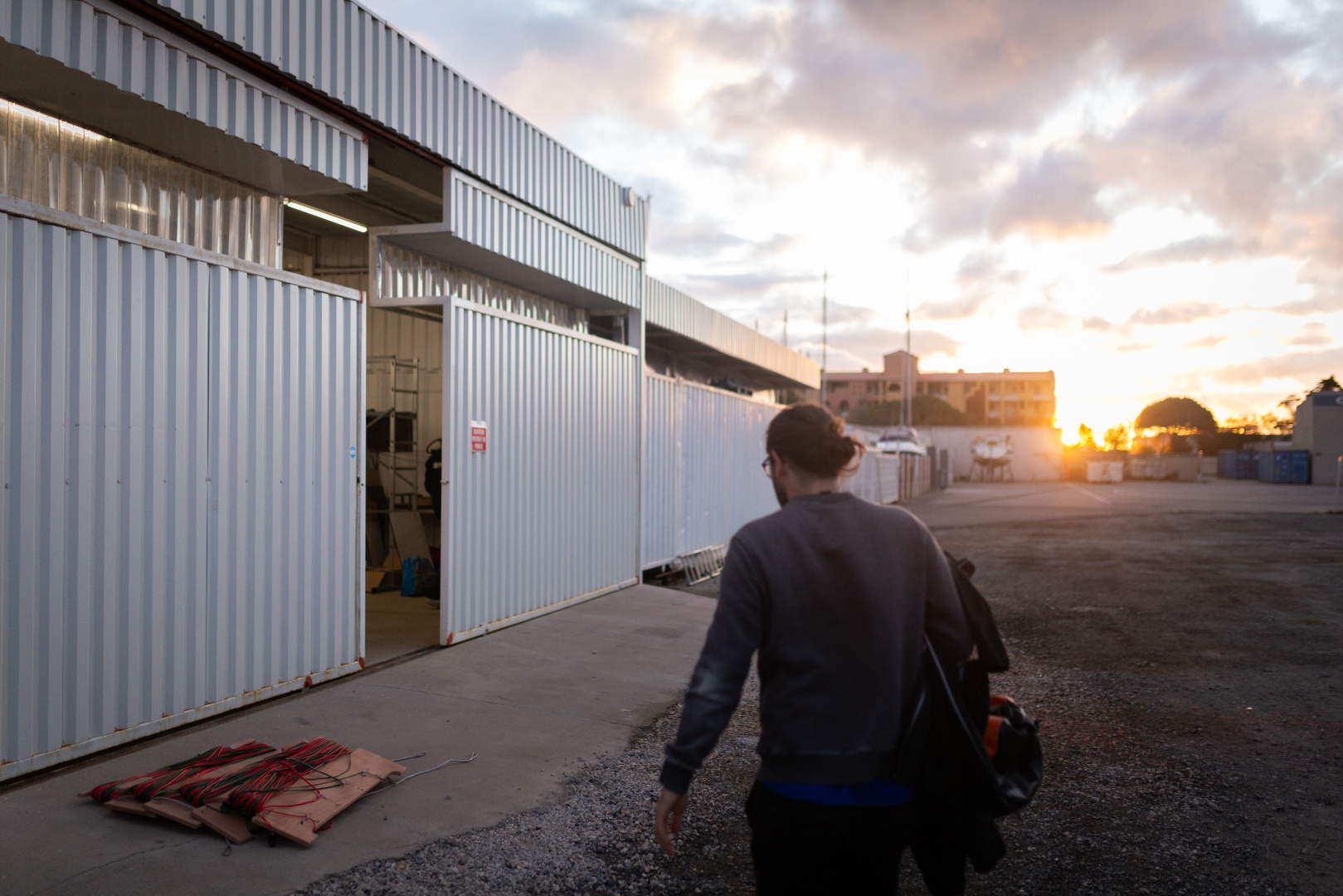
D-Day, 8 am
It is barely dawn and the team is already hard at work in the workshop. Some load the equipment on our motorboats (or “chase boats”) while others run the last checklists on the boat. The boat is ready within a few minutes and is brought down the slipway. Once on the water, the pilots hop onboard and the cockpit is closed. Everyone connects their headsets to ensure a fluid communication within the team during the whole day, and we are off!
We are extremely lucky to have BMW Switzerland onboard our adventure, allowing us to travel between Switzerland & France and to get the boat on the water!

9 AM, getting out of the harbor
The boat cannot leave the harbor on its own, the two chase boats must guide it to maneuver it at low speeds until it reaches sea. Once we are clear from danger, Chase 1 speeds up to tow our boat faster to the record spot, located approximately 10 nautical miles (18km) away from the harbor, along the Coussoules beach. The teams and their respective chase boats have specific missions. Chase 1 handles the record boat and Chase 2 handles all matters related to the kite.
10 am, setting up
Chase 1 sets anchor and firmly lashes the record boat in standby position to prepare the first kite launch. Once the boat is stationary, Chase 2 ties itself to the record boat, inflates the kite and prepares to connect the kite lines to the boat. This is also a critical communication stage between the various teams and we reevaluate the conditions: is the wind as strong as expected? Is it stronger? We decide the appropriate line length for those conditions, which might have a significant impact on our run! The longer they are, the more room our pilot Benoit has to play with the kite: by moving it around in the air, the kite’s speed increases and thus generates a stronger output force, accelerating the boat in its turn. However, longer lines generate stronger drag, which slows down the boat: we need to find the right compromise.
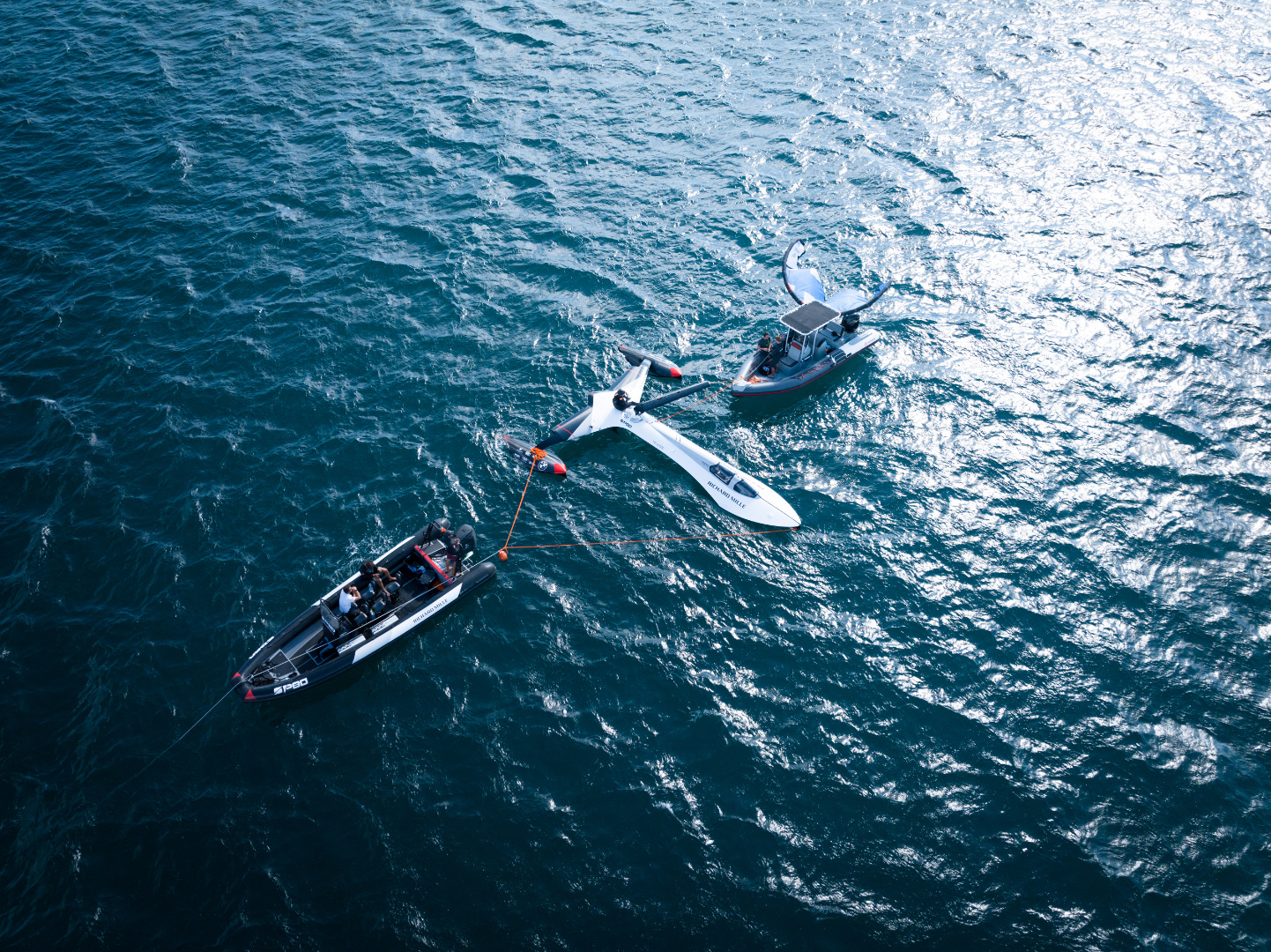
During this step, Chase 2 is attached to the record boat, which is tied to Chase 1, which is anchored!
Once all is ready for the kite launch, Chase 2 separates itself from the group and starts to unfurl the kite lines.
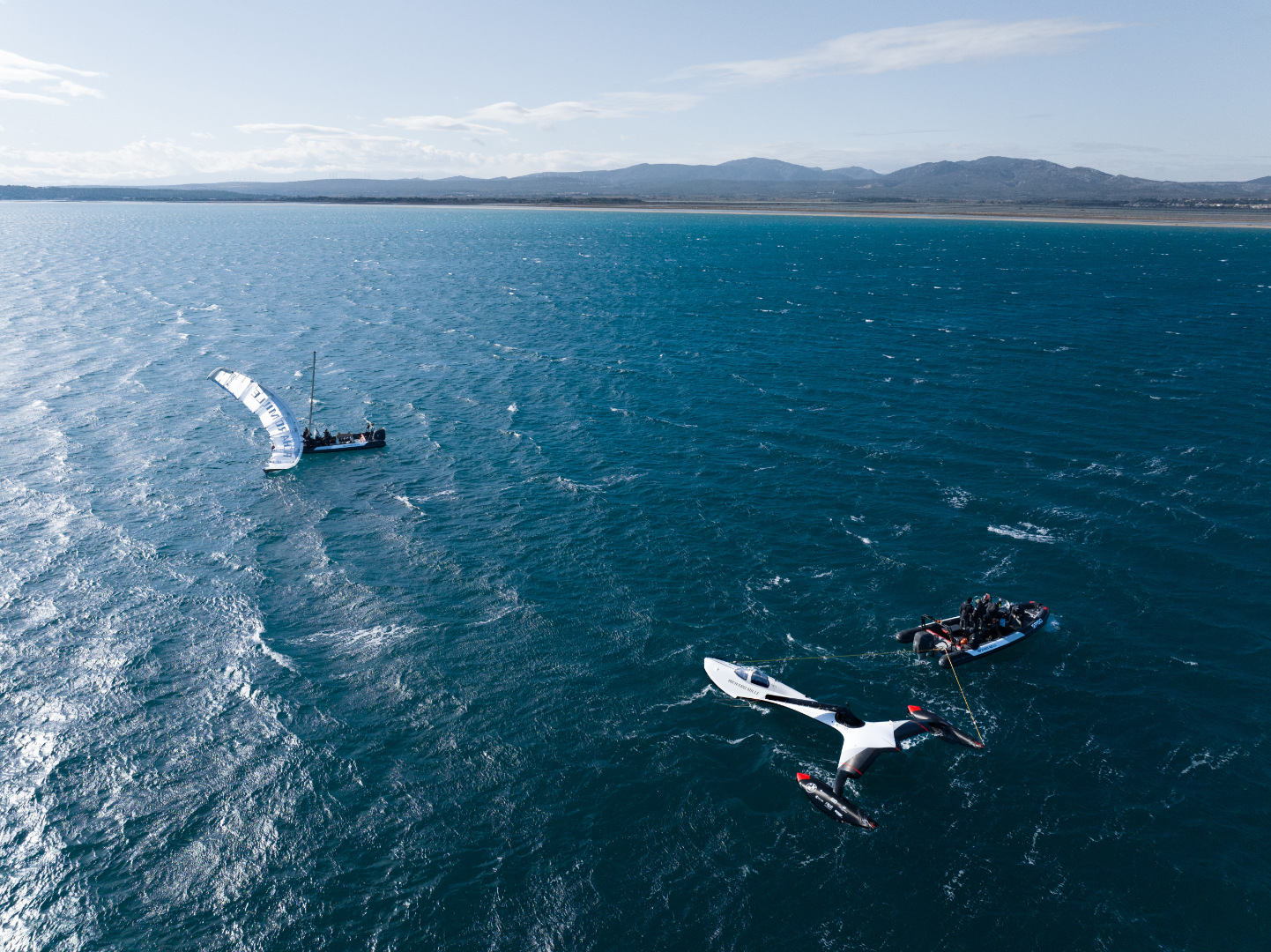
11 am, the first run
Chase 2 slowly distances itself until it is at the edge of the kite window (meaning the position where the kite can easily take of relative to the wind). Slowly, the record boat, still anchored to Chase 1 at this stage, starts to have traction coming from the kite and pivots to face the wind. Once the pilots give their go, Chase 2 waits for a gust to get the wing started…..3, 2, 1 the kite is off!
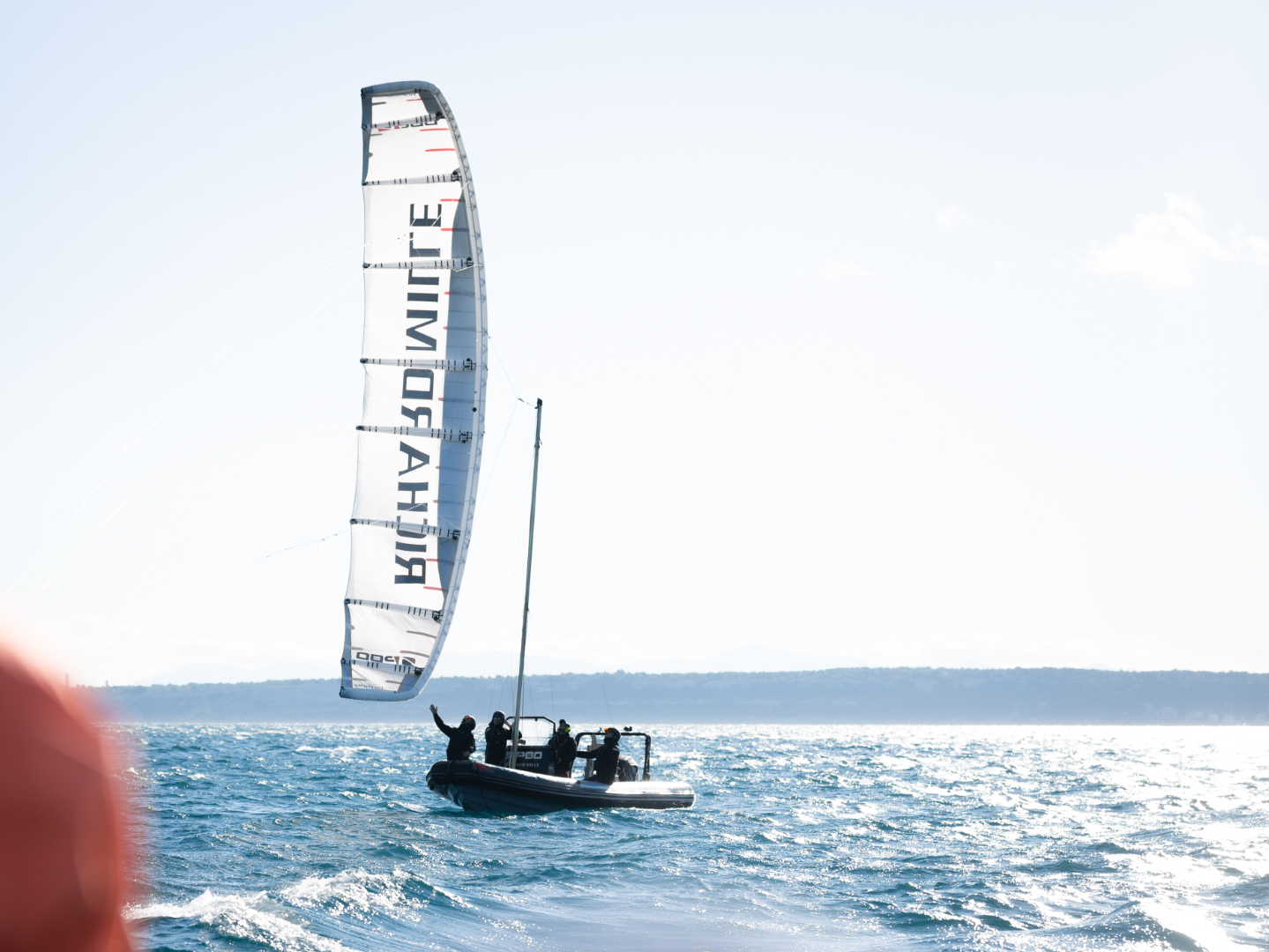
Onboard, Benoit takes over and ensures he has good control of the kite. Then, he gives the go to Chase 1 so that it releases the boat. This stage takes place in two steps. We first make the boat pivot back in the right direction to start the run (crosswind). Then, the last mooring is released: our rocket is off and can finally gain speed!
During the run, the two chase boats are closely following the record boat in case the pilots need help. They are focused on the state of the water to avoid collisions, the distance to the shore and the depth. Constantly communicating with the pilots, they give their external observations: are they getting too close to the shore or an area that is too shallow, which could damage the foil? If so, the run is called off, the pilots release the kite and the boat immediately stops.
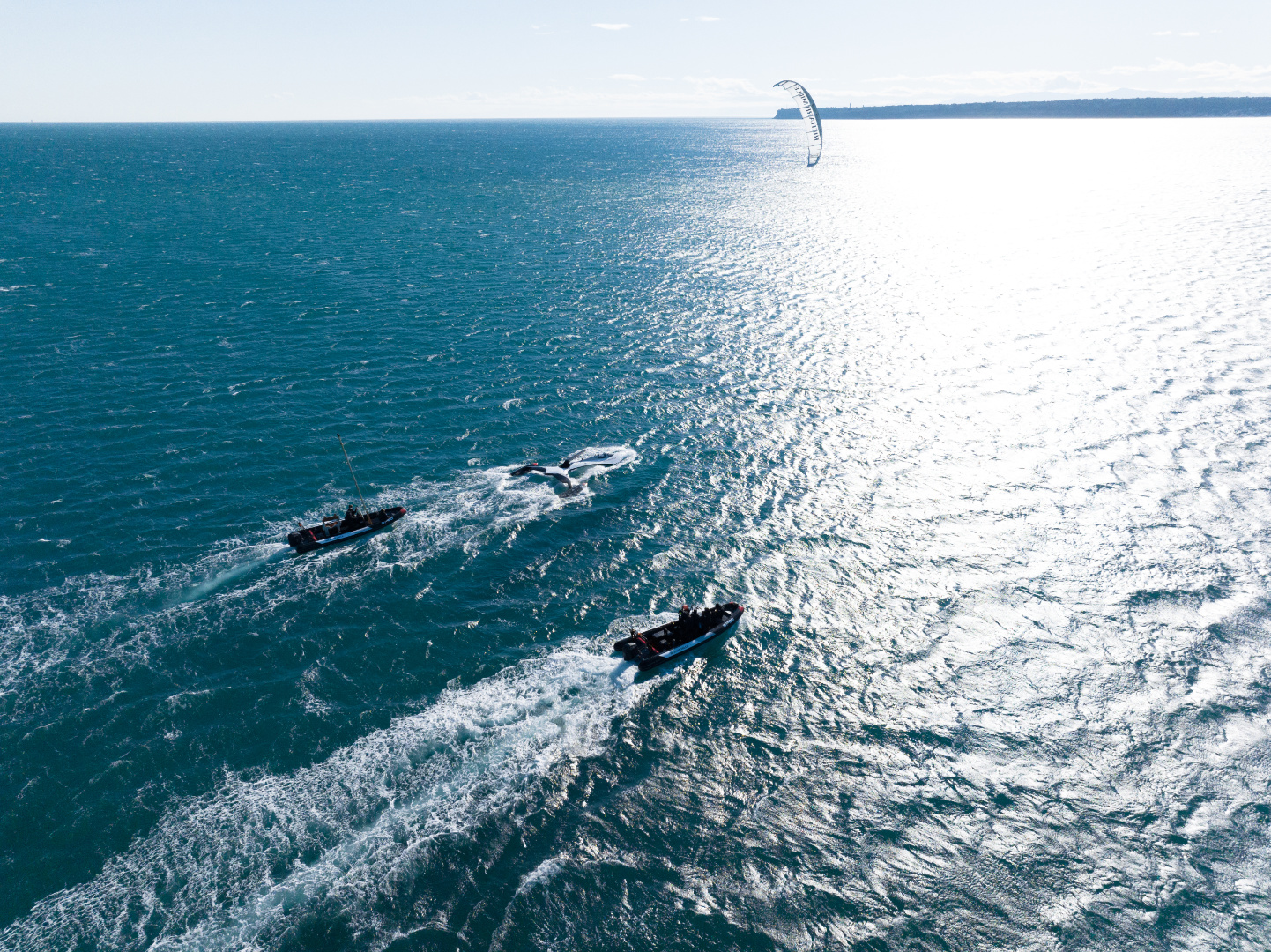
Once the run is completed, Benoit brings the kite down to the edge of the window and releases it near Chase 2, whose sole mission is to retrieve it. The team has to be quick and precise to avoid the kite flying away or the lines getting tangled in the appendages (foil and rudder). To help with the maneuver, Chase 1 immediately retrieves the boat to prevent it from drifting away.
Once the kite and boat are secured, Chase 1 tows the boat back to its anchor and sets up the next run. Meanwhile, Chase 2 prepares the kite for a new launch with a new set of lines: to avoid having tangled lines and losing time on the water, we never use the same set twice in a day! That’s why we leave in the morning with many sets onboard. All the lines will be untangled at the end of the day in our workshop.
12 pm, one run after another
During these operations, the team and pilots exchange critical information, like the max speed reached during the run, the values measured by the onboard force and motion sensors, how the pilots felt, how the next run should be organized, etc. Then, Chase 2 returns to connect the kite with a fresh set of lines, and here we go again! One run after another, we only stop when the conditions force us to come back to shore (wind reduces, no more available sets of lines, night approaching, etc). On average, the team performs 5 runs in a day.
5 PM, Going back home
Once the decision has been made to return to base, the anchor is hoisted and Chase 1 tows the boat back to the harbor. It is then quickly taken out of the water, but the day is far from over! The boat and its electrical/mechanical components must be rinsed and put to dry, and the systems have to be carefully checked. The hundreds of meters of lines used during the day must be untangled to be rinsed, dried, and methodically folded for next time, and the giant kites also need a place to dry!
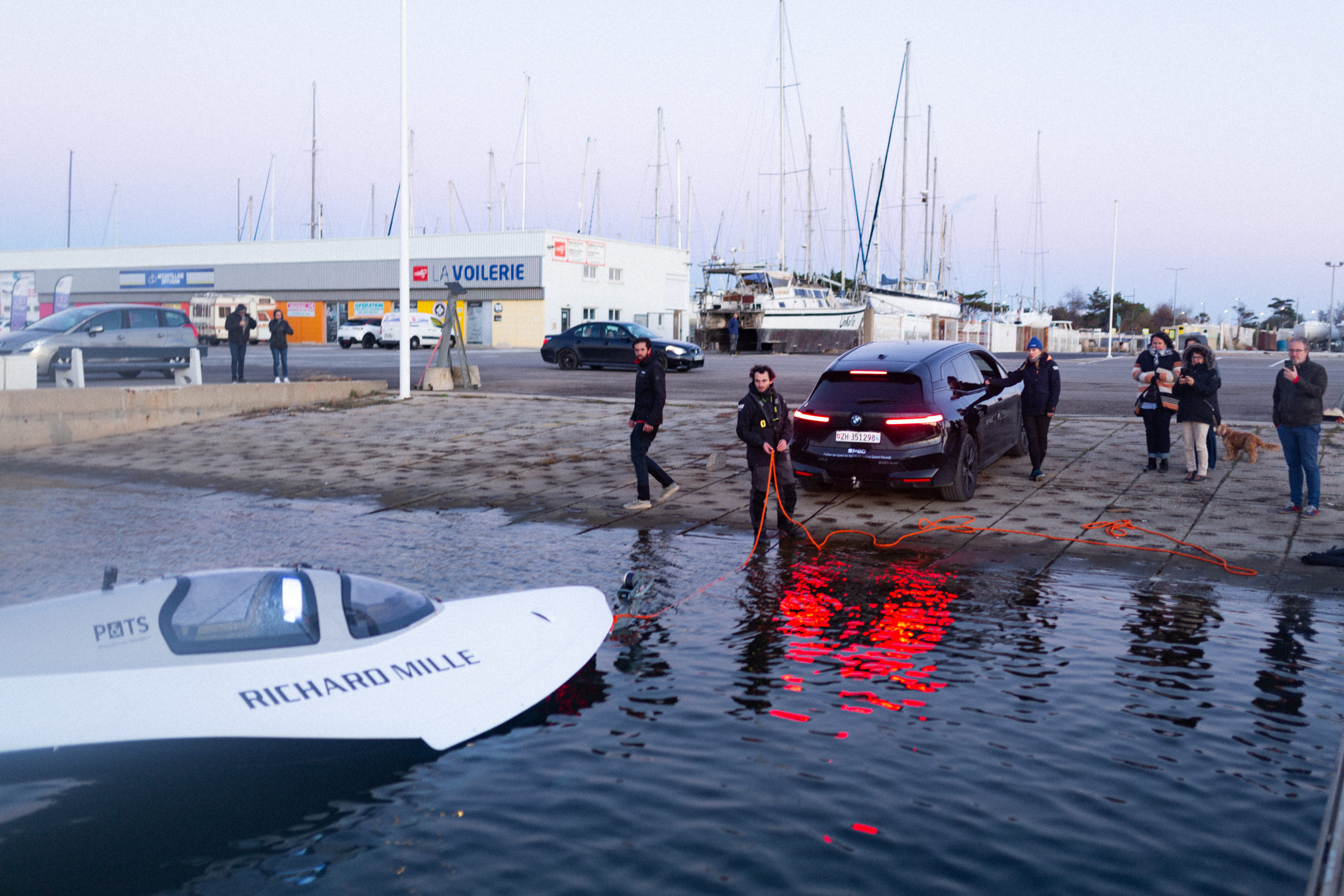
6 pm, Debriefing
This is one of the most critical moments of the day: from the very start of the day to the last run, all the details are examined with a fine-tooth comb. We go over what went well and what didn’t, what took too long, how we can improve from a logistic standpoint, how the pilots can improve their runs, etc. It is a critical moment for us because every first for the boat is also a first for the team! Our boat being unique, everything has to be rethinked! We need to train and practice, to be performant with the boat but also to be efficient with the logistics involved with a run.
Notes are taken and tasks handed out to improve the boat’s performance in the next runs, and the max speed of the day finds its place on the speed board in the office! Finally, it is time to return home to recover from a hard day at work and return the next day ever so motivated, with the next runs already in the back of our heads.
© Pictures in the article: Guillaume Fischer
Copyright 2024 | SP80 | All Rights Reserved

